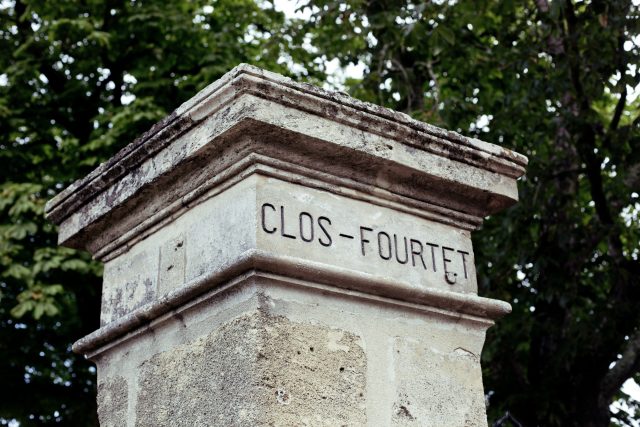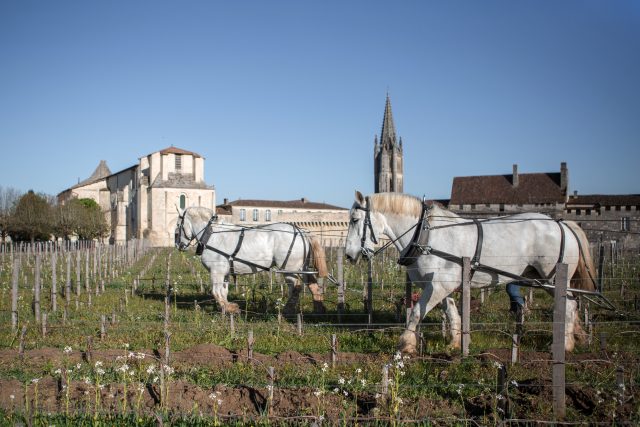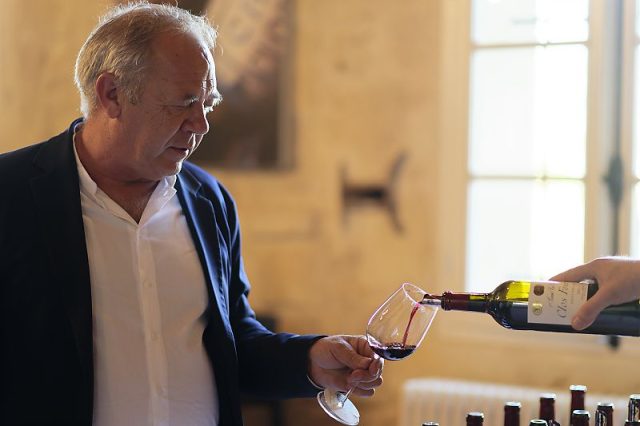This website uses cookies so that we can provide you with the best user experience possible. Cookie information is stored in your browser and performs functions such as recognising you when you return to our website and helping our team to understand which sections of the website you find most interesting and useful.
Twenty years of Clos Fourtet and the Cuveliers
In 2001, the Cuvelier family acquired Clos Fourtet in St-Emilion, installing Stéphane Derenoncourt and Jean-Claude Berrouet as consultant winemakers. Since then, two decades of vintages have charted Bordeaux’s evolving climate – and showcased the vineyard’s prized limestone soils. Richard Woodard reports.

Stéphane Derenoncourt has vivid memories of 2001, when Philippe Cuvelier bought Clos Fourtet in St-Emilion from the Lurton family for a reputed €45m. “He decided to meet all the consultants,” Derenoncourt recalls, “and I think I was the last one. Cuvelier said: ‘You are too young.’
“I had started as a consultant in 1999, so my company was two years old. Cuvelier said: ‘I want to work with you, but I have a question, you have to decide.’”
The decision was an outright choice: work with Jean-Claude Berrouet (of Petrus fame) or with another consultant who, in Derenoncourt’s words, was “not so philosophical”.
“I had a reflection for about 0.001 seconds and I said ‘Jean-Claude Berrouet’. We have a lot of fun, I have to say – and it’s good for the wine when we have fun.”
Derenoncourt and Berrouet have been “having fun” at Clos Fourtet for over 20 years now, during which time investments have been made in winery and cellar, and – more significantly – there has been a quiet revolution in the vineyard, introducing progressively organic and biodynamic practices.
Derenoncourt talks about taking great care over the temperature of the soil, and the need to keep the freshness in the wine. Les Grandes Murailles – the two-hectare plot of old Merlot overlooked by the surviving wall of a 13th-century Dominican convent and acquired in 2013 – has been incorporated into the Clos Fourtet blend from 2022. Meanwhile, the planting of a massal selection of Cabernet Franc from 2019 is beginning to come on stream.
Still freshness remains key at Clos Fourtet, prominently placed as it is just outside the town of St-Emilion, high on its limestone ridge. “I talk about the fantastic limestone we have in Clos Fourtet,” Derenoncourt explains. “It’s not only clay, it’s an elegant wine – and it’s a style we want to keep.”
The signatures? Chalky tannins, finesse, a velvety texture and salinity.

A vertical tasting covering the 2001-2020 vintages at Clos Fourtet illustrates the striking contrasts between the growing seasons; rather than constructing a pure, chronological vertical, Derenoncourt and technical director Emmanuel de Saint Salvy split the wines into vintage “characters” as follows:
- The fresh: 2002, 2006, 2011, 2013, 2017
- The luminous: 2003, 2009, 2015
- The iconic: 2001, 2004, 2008, 2012, 2014
- The exceptional: 2005, 2010, 2016
- The youthful: 2018, 2019, 2020
The keen-eyed (and numerate) may already have noticed that there are only 19 years listed; more on that later.
Inevitably, talk also turns to the, to quote Derenoncourt, “incredible” 2022 vintage. “We were very stressed during the year,” he says. “The ripeness arrived very early – we had a lot of sun … We think that the process of stress arrived very early in the year, and the vine adapted its production to this condition.”
Nonetheless, it required careful handling: lowering fermentation temperatures, being careful not to over-extract in a year when the grape skins were so thick. “We didn’t extract a lot,” says Derenoncourt. “It was made by nature, a natural concentration. For me it was something new in terms of balance.”

The result reminds him of 1982 – “when we in Bordeaux understood for the first time that we could make great wine with ripe fruit” – and encourages him to believe that Merlot still has a role to play in Bordeaux’s changing climate.
“I’m sure Merlot can be great every year. It loves clay, it loves limestone. If you manage the soil and understand the weather, then 2022 shows the resilience of the vineyard. I think we can continue to make St-Emilion for some decades.”
Clos Fourtet 2001-2020: commentary from Stéphane Derenoncourt

The fresh: 2002, 2006, 2011, 2013, 2017
“Maybe the most difficult vintage was 2002, because we used to say August made the quality of the must, and August was awful, with no sun … But there is fruit and a little liquorice. I have to say I didn’t expect to have the wine like this.
“In 2006, we had a little bit of dilution and botrytis. The goal was to be very selective in terms of blending and try to find a good concentration. It’s a surprise to me.
“2011 was a very strange vintage, because we had summer in spring, and during the summer it was spring. The wine reflects this.
“2013 is the most difficult vintage of the tasting. It’s still a beautiful wine because it’s elegant, but with the other wines I talk about saltiness. Maybe with this one we can talk about acidity.
“I love 2017. You can say it’s a cold vintage. It’s not very powerful and for a long time it was not very fruity. But you can feel the limestone of Clos Fourtet. It can age for a long time.”
The luminous: 2003, 2009, 2015
“This is totally the opposite: the three most warm and dry vintages. It’s very interesting to see the capacity of Clos Fourtet because of the limestone to keep the freshness, even in these extreme vintages.
“Of course it’s more black fruit, but you have to know that these vintages are with very high alcohol and very low acidity. The balance of these wines is made not in the acidity, but in the saltiness of the limestone.”
The iconic: 2001, 2004, 2008, 2012, 2014
“Iconic, but at the same time it’s really classic. This is for me what is the definition of a great Bordeaux. Even if 2008 was a little bit colder, I think we are in the same category of vintages.
“It’s a particularity in Bordeaux: this is a place where sometimes we have something called an Indian summer – beautiful weather, not very warm, shorter days, very cold nights, during October. It affects the skins of the grapes and it’s very easy for us to build a beautiful wine with a lot of elegance.”
The exceptional: 2005, 2010, 2016
“You know in Bordeaux just before the wine is sold, we used to speak every year about the vintage of the century? Sometimes, maybe once or twice, it might be true. What is a perfect vintage? It’s when we can have both great ripeness and great freshness.
“The 2016 is still a baby: it’s still a little bit closed and doesn’t talk much.”
The youthful: 2018, 2019, 2020
“Of course it’s still very young, but it’s a nice trilogy [like 2008-10, 1988-1990].
“Now we are very comfortable with the wine, but we have to say the 2018 was very difficult in the vineyard – big pressure of mildew, so we had to fight in the spring, but the sun came through in August.
“2019 was a perfect vintage because we did not have to do anything in the vineyard – no mildew, oidium, good quantity, good flowering, good ripeness. When you don’t have a lot to do in the vineyard, it’s a good vintage.
“In 2020, I have to say a lot of vineyards suffered in August because of the dryness. That was not the case at Clos Fourtet because of the limestone.”
The missing vintage: 2007
“It was not our favourite vintage. There are no more stocks at the château, and I have to say this wine had a lot of success and we were very surprised, because we had a problem with brettanomyces after the bottling.
“There was an attack of brettanomyces and it was a little bit ‘animal’, but a lot of people liked that – so we decided to sell everything.”

